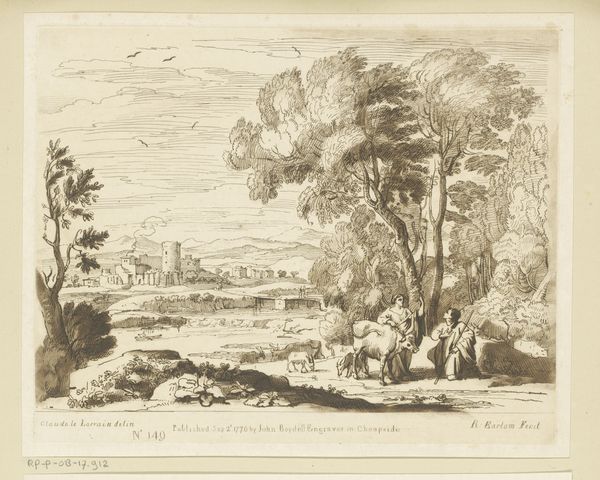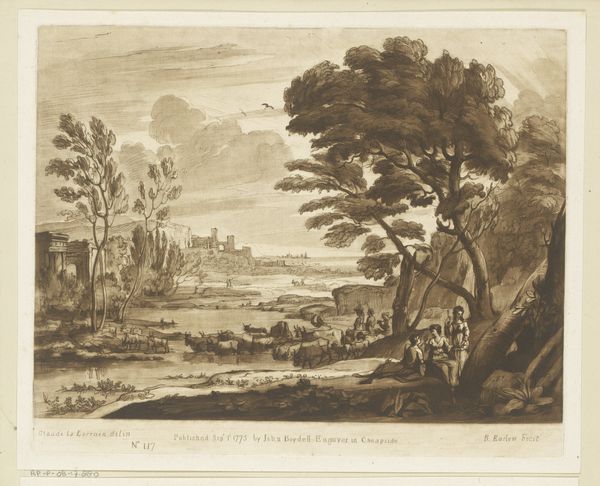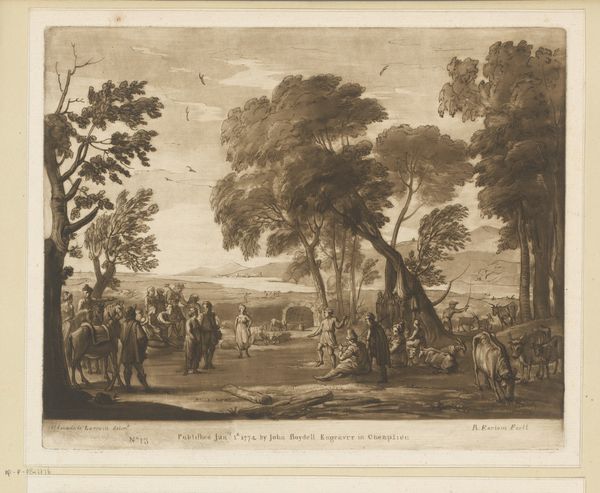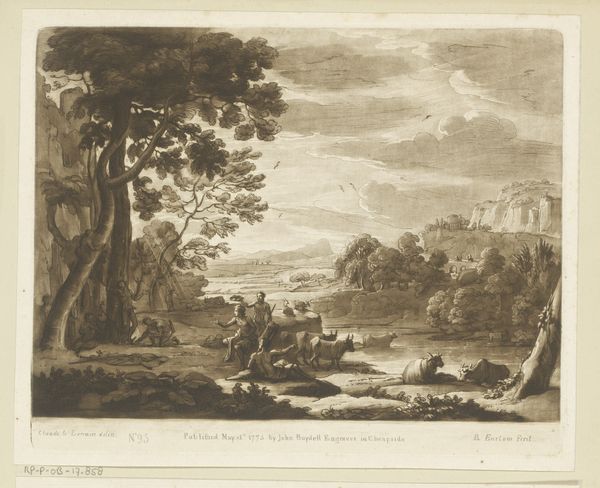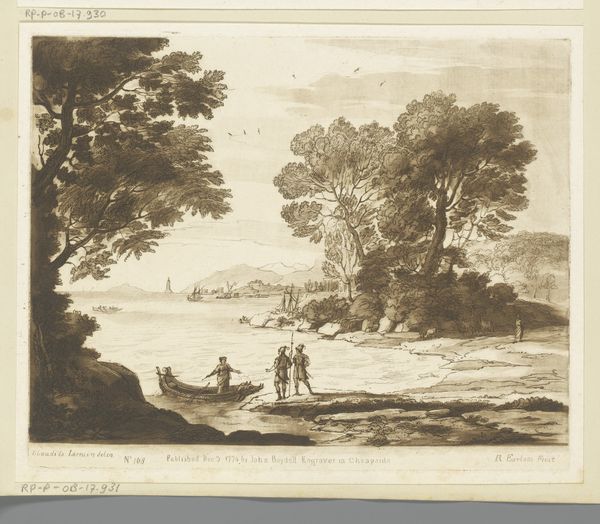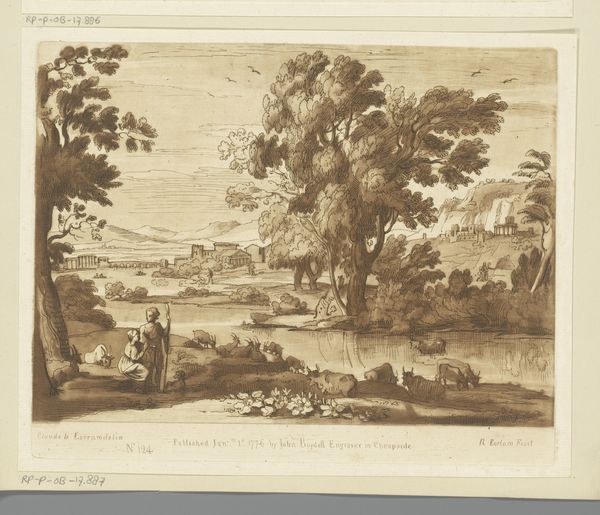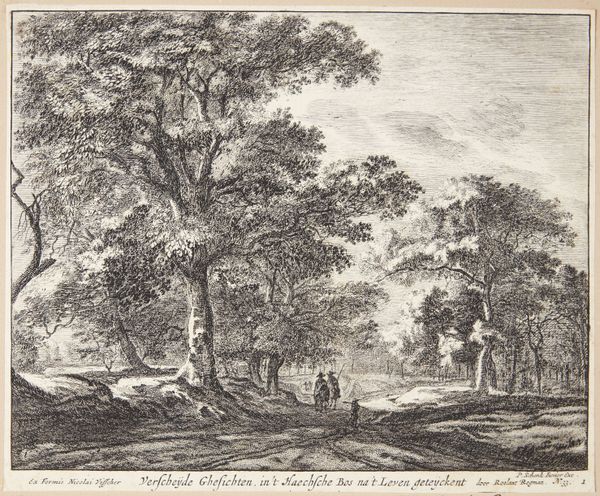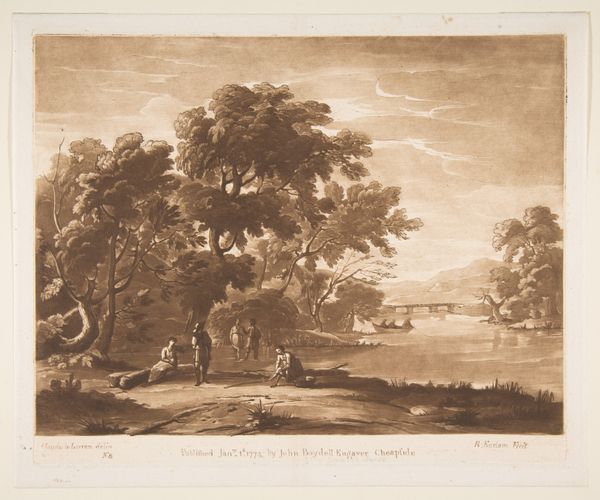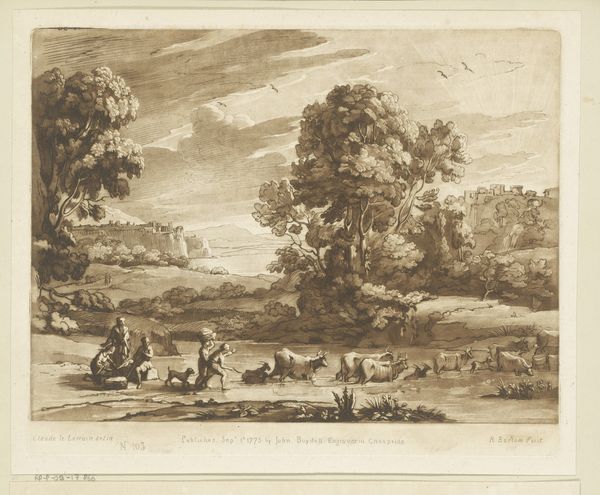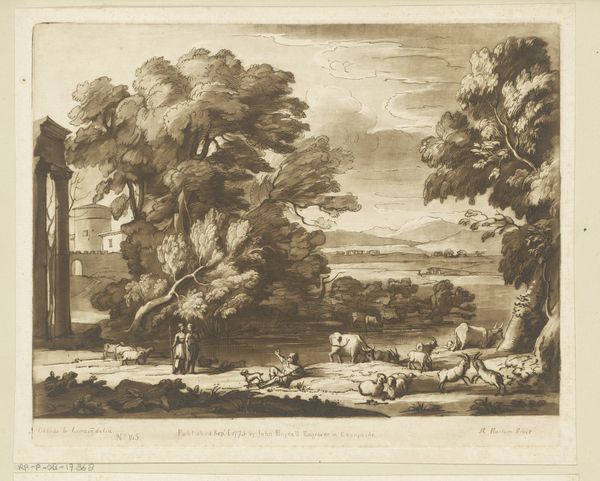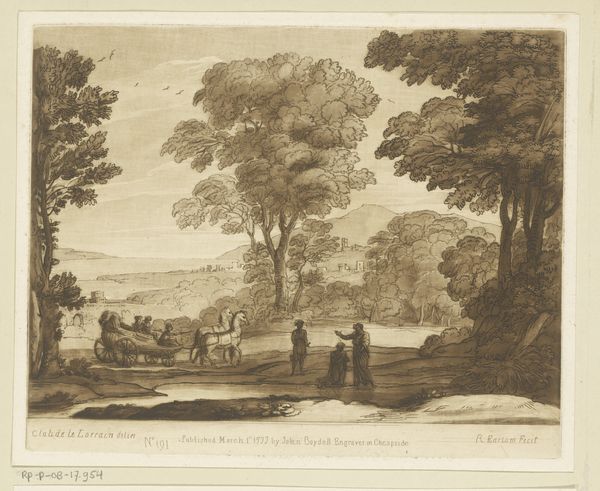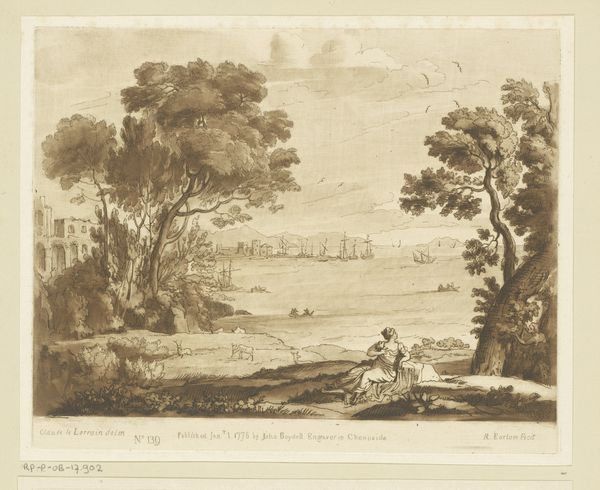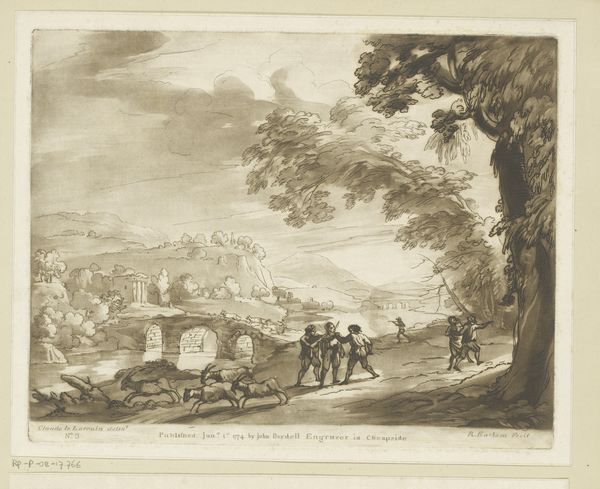
print, engraving
# print
#
landscape
#
charcoal drawing
#
pencil drawing
#
history-painting
#
engraving
Dimensions: height 209 mm, width 260 mm
Copyright: Rijks Museum: Open Domain
Richard Earlom created this print, "Landschap met Hagar en de engel bij een ruïne", in 1778. The scene depicts Hagar, a woman of color enslaved by Abraham and Sarah in the Old Testament, being visited by an angel in a desolate landscape. Consider the history of representing marginalized figures in art. Hagar's narrative—a story of displacement, abuse, and resilience—resonates with many women throughout history. Earlom, working within a European artistic tradition, brings his interpretation to this biblical scene. What does it mean to see Hagar rendered in this landscape, mediated through the artist's gaze and hand? The ruins in the background, overgrown by nature, speak to time and the impermanence of human structures. While Earlom reproduces a biblical story, he also invites us to consider the intersections of faith, power, and identity. How does the depiction of Hagar reflect or challenge societal attitudes towards women, particularly women of color, in the 18th century?
Comments
No comments
Be the first to comment and join the conversation on the ultimate creative platform.
